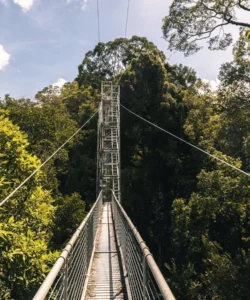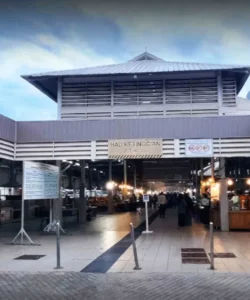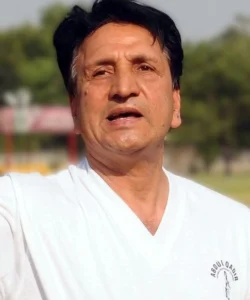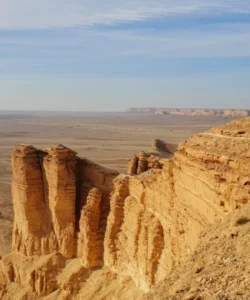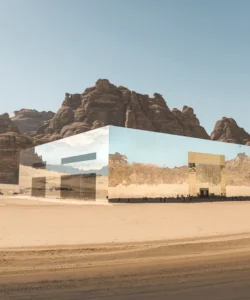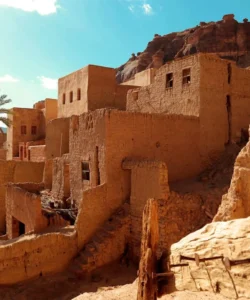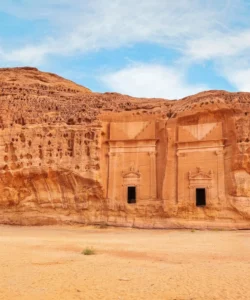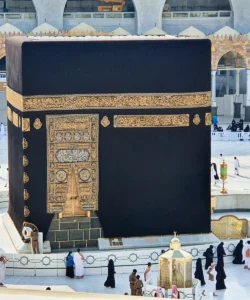The National Memorial Chorten, often referred to as the Thimphu Chorten, is one of the most iconic and visible religious landmarks in Thimphu, Bhutan’s capital city. This revered Buddhist stupa serves as a powerful symbol of universal peace and a memorial to the third King of Bhutan, Jigme Dorji Wangchuck, who is considered the “Father of Modern Bhutan.”
Name: National Memorial Chorten (Dzongkha: བརྒྱལ་སྟག་ཆོད།, usually translated as Memorial Stupa or Thimphu Chorten)
Address: Doeboom Lam, Thimphu, Bhutan. It is prominently located in the heart of Thimphu city, near the main roundabout, making it easily accessible and a focal point of daily life.
How to Get There:
All foreign visitors (except those from India, Bangladesh, and the Maldives) must arrange their travel to Bhutan through a licensed Bhutanese tour operator, which includes all transportation.
- By Air to Paro (PBH): International travelers typically fly into Paro International Airport (PBH), Bhutan’s only international airport.
- From Paro to Thimphu: Thimphu is about 50-60 kilometers (31-37 miles) from Paro and takes approximately 1.5 to 2 hours by car.
- Within Thimphu: The National Memorial Chorten is centrally located and easily accessible from any part of Thimphu city.
- By Car/Taxi: Your tour operator will arrange transport. Taxis are also readily available in Thimphu.
- By Foot: Many hotels in central Thimphu are within walking distance of the chorten, allowing for a pleasant stroll.
- Entrance Fee: There is typically an entrance fee for foreign visitors, though some sources state it is free. It’s best to confirm locally.
- Dress Code: As a sacred site, modest dress is required (shoulders and knees covered for both men and women). Footwear must be removed before entering the main platform for circumambulation.
- Best Time to Visit: The chorten is a hub of activity from dawn until long after dusk. Early morning (before 9 AM) or late afternoon/evening (after 4 PM) are ideal to observe local devotees performing their daily rituals, offering butter lamps, and circumambulating the stupa. The golden spire glistens beautifully in the morning or evening light.
Landscape and Architecture:
The National Memorial Chorten is a stunning example of Tibetan-style Buddhist stupa architecture, carefully designed to be a prominent spiritual landmark.
- All-White Stupa with Golden Spires: The chorten is a large, pristine white structure with a distinctive golden spire crowning it, along with a smaller golden spire above its front porch. This gleaming white and gold exterior makes it highly visible and a prominent landmark in the city.
- Tibetan-Style Jangchup Chorten: Its architecture is modeled on a Tibetan-style Jangchup Chorten, also called the Chorten of Illumination. It features a unique vase-like or pyramidal design that flares outward instead of forming a traditional dome, giving it a distinctive silhouette compared to other chortens.
- Symbolic Design: The chorten does not enshrine human remains (as is common for many stupas). Instead, it was conceived to represent the “mind of the Buddha” and is filled with various spiritual elements. It is heavily laden with symbolism, embodying Buddhist philosophy and teachings.
- Ornate Annexes and Mandalas: The chorten is decorated with richly carved and painted annexes facing the four cardinal directions. These contain intricate mandalas, numerous statues, and a shrine dedicated to the third king.
- Interior Galleries: The chorten has three internal floors, each dedicated to different aspects of the Nyingma school of Tibetan Buddhism.
- The ground floor is consecrated to the teachings of Vajrakīlaya and features four shrines with images of the king.
- A staircase leads to two more floors, dedicated to the Drukpa Lineage and Lama Gongdu teachings. The top floor has paintings depicting various Nyingma deities and visions that appear in the bardo.
- There’s also a gallery above the top floor, offering panoramic views of Thimphu city.
- Protective Bodhisattvas at the Gate: The entrance to the chorten is approached through a small garden and a gate adorned with three slate carvings representing the three protective bodhisattvas: Avalokiteśvara (compassion), Mañjuśrī (knowledge), and Vajrapāṇi (power).
- Large Prayer Wheels: To the left of the main entrance, visitors will find large, red prayer wheels that devotees circumambulate and whirl, a traditional Buddhist practice to accumulate merit.
- Engraved Slates: The interior walls feature slates engraved with images of Ngawang Namgyal (the unifier of Bhutan), Gautama Buddha, and Padmasambhava (Guru Rinpoche).
What Makes It Famous:
- Memorial to the Third King: It was constructed in 1974 in memory of His Majesty Jigme Dorji Wangchuck, the third King of Bhutan, who is revered as the “Father of Modern Bhutan.” This direct dedication to a beloved monarch makes it a significant national monument.
- “Most Visible Religious Landmark in Bhutan”: Its prominent location in the heart of Thimphu and its gleaming white and gold exterior make it the most recognizable and frequently visited religious site in the capital.
- Symbol of Universal Peace: Beyond its memorial function, the chorten is dedicated to world peace, embodying a broader spiritual significance.
- Active Center of Daily Devotion: The chorten is a vibrant hub of daily worship for locals, especially the elderly, who constantly circumambulate, spin prayer wheels, and offer prayers. This constant spiritual activity creates a powerful and authentic atmosphere.
- Unique Tibetan-Style Architecture: Its distinctive vase-like design, directly inspired by Tibetan Buddhist traditions and representing the mind of the Buddha, sets it apart from other chortens in Bhutan (such as the traditional low stone towers or series of 108 chortens like those at Dochula Pass).
- Repository of Buddhist Teachings: The intricate interior design, with its multiple floors and detailed paintings depicting various Nyingma teachings and deities, makes it an important learning center for Tantric Buddhism.
Differences from Some Other Wonders:
- Memorial Stupa for a Monarch (without human remains): Unlike many other stupas or tombs that enshrine human remains (like the Taj Mahal, Humayun’s Tomb, or other stupas with relics of saints/Buddhas), the National Memorial Chorten was specifically built as a cenotaph and an object of devotion representing the “mind of the Buddha” in memory of the third King, with only his photo on display. This unique purpose for a chorten of its scale is a key differentiator.
- Tibetan-Style Jangchup Chorten Design: While Bhutan has various styles of chortens, this one is specifically modeled on a Tibetan-style Jangchup Chorten with a distinct vase-like, outward-flaring shape, which is less common in Bhutan than the traditional lower stone towers seen elsewhere (e.g., Dochula Pass). This makes its architectural form quite unique within Bhutan.
- Urban Location and Daily Local Engagement: Unlike remote monasteries (like Tiger’s Nest) or more expansive dzongs (like Punakha Dzong or Tashichho Dzong, which are governmental/monastic complexes), the National Memorial Chorten is a standalone religious landmark located directly in the bustling city center of Thimphu, serving as a constant focus of daily spiritual life for ordinary citizens. This integration into the everyday urban fabric is a defining characteristic.
- Focus on Nyingma School Teachings: While Bhutanese Buddhism has various schools, the interior of the National Memorial Chorten is specifically consecrated to and filled with imagery representing the teachings of the Nyingma school (one of the oldest schools of Tibetan Buddhism), offering a particular theological focus.
- No Defensive Function: Unlike dzongs (fortress-monasteries like Tashichho Dzong or Punakha Dzong), the National Memorial Chorten has no defensive or administrative function. It is purely a religious and memorial monument, reflecting a different purpose in Bhutanese architecture.
National Memorial Chorten Photos:























